Understanding Varicocele's Impact on Fertility
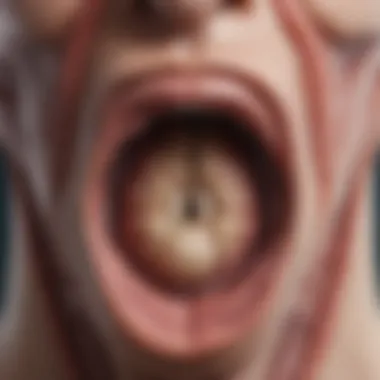
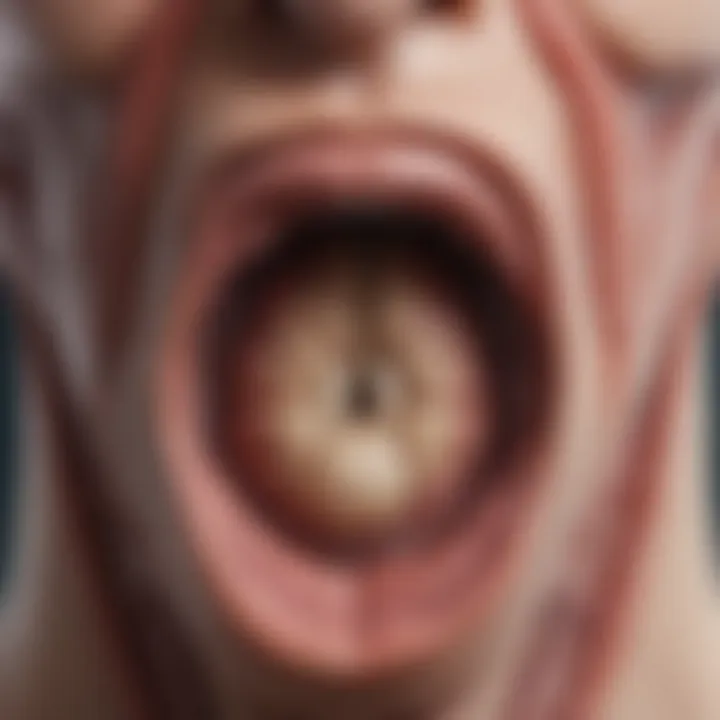
Intro
Varicocele is a condition that draws significant attention for its potential consequences on male fertility. Defined as the abnormal enlargement of veins within the scrotum, it often goes unnoticed until problems arise. The complex interplay between varicocele and reproductive health represents a crucial area of study. Understanding its effects on sperm quality and production is vital for both individuals and healthcare providers.
Research Overview
Research into varicocele continues to evolve, uncovering intricate details about how this condition impacts male reproductive capabilities. Studies have consistently shown a correlation between varicocele and decreased sperm parameters, including count, motility, and morphology. These findings underscore the importance of recognizing and diagnosing varicocele in patients experiencing infertility.
"Varicocele affects approximately 15% of the male population and is a common cause of male infertility."
Summary of Key Findings
The primary research findings indicate that:
- Varicocele is often linked with oxidative stress, which damages sperm cells and impairs fertility.
- Hormonal disruptions caused by varicocele can lead to altered testosterone levels, influencing sperm production directly.
- Surgical intervention has shown efficacy in improving sperm parameters in many infertile men.
Importance of the Research
Understanding this medical condition is essential for developing effective management strategies. Improved awareness allows for better diagnosis and targeted treatment options. These insights contribute not only to clinical practice but also to broader discussions about male infertility and reproductive health.
Methodology
To thoroughly assess the impact of varicocele on fertility, detailed methodologies are in place to guide research efforts.
Study Design
Most studies employ both observational and interventional designs. Observational studies often focus on understanding the natural history of varicocele and its manifestations in affected individuals. Interventional studies frequently assess the outcome of various treatment modalities, including surgery and medical therapies.
Data Collection Techniques
Research typically utilizes:
- Semen analysis to evaluate sperm quality before and after treatment.
- Hormonal assays to measure testosterone levels and other relevant hormones.
- Imaging techniques such as ultrasound to confirm the presence and severity of varicocele.
Diving deeper into these methodologies allows researchers to draw comprehensive conclusions regarding the implications of varicocele and its management within male fertility contexts.
As the body of research grows, the landscape of knowledge surrounding varicocele will enhance, supporting better outcomes for men facing fertility challenges.
Prelude to Varicocele
The exploration of varicocele holds significance not only in urology but also in the context of reproductive health broadly. Varicocele is a condition characterized by the enlargement of veins within the scrotum, often likened to varicose veins that can occur in the legs. Understanding this condition is critical, as it is linked with male infertility and can have far-reaching implications on both physical and emotional well-being. Men with varicocele may face difficulties in conception, making awareness and education on this topic essential for those affected.
The impact of varicocele isn't limited to infertility alone. There is a robust connection between this condition and hormonal imbalances, as well as testicular function. Knowing how varicocele develops and its potential risks can aid in early detection and informed decision-making regarding treatment options. Furthermore, evaluating varicocele's prevalence assists healthcare professionals in understanding its epidemiology, ultimately driving better patient care.
Definition and Overview
Varicocele is defined as the abnormal enlargement of the pampiniform venous plexus within the scrotum. The condition often develops during puberty when the blood flow in the testicular veins becomes disrupted, leading to blood pooling. This abnormality can disrupt the thermoregulation of the testis, which is vital for sperm production.
The classification of varicocele can range from grade I (small, detected only by Doppler examination) to grade III (large, visible on clinical examination). Grades II and III are more likely to impact fertility. The prevalence of varicocele is notably high among men presenting for infertility evaluations, estimated to be around 15% to 20% in the general male population but much higher—up to 40%—in those with infertility issues.
Epidemiology of Varicocele
The epidemiology of varicocele shows that it affects men across various age groups, predominantly within the reproductive age. It is estimated that varicocele appears in approximately 20% to 30% of the male population overall. In terms of fertility, studies indicate that more than 50% of men presenting with infertility have a varicocele. Such data highlight its relevance in clinical practice.
Factors contributing to varicocele include genetics, anatomical variations, and potential environmental influences. The condition is more commonly diagnosed in the left testis due to anatomical reasons related to venous drainage pathways. Awareness of risk factors and prevalence can lead to increased screening and evaluation in men, especially those struggling to conceive.
Understanding varicocele from an epidemiological perspective is essential for healthcare providers. It underscores the need for routine examinations and potential treatment modalities for at-risk individuals. Many men may not recognize the signs until later stages, emphasizing the importance of awareness and education.
Physiology of the Male Reproductive System
The physiology of the male reproductive system plays a fundamental role in understanding how varicocele affects fertility. This system encompasses various organs and processes that collectively contribute to sperm production and hormone regulation. A clear grasp of the anatomy and functionality within this system is essential for assessing how any disruption, such as seen in varicocele, can lead to fertility issues.
Anatomy of the Male Reproductive Organs
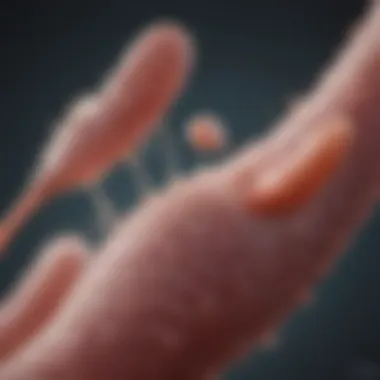
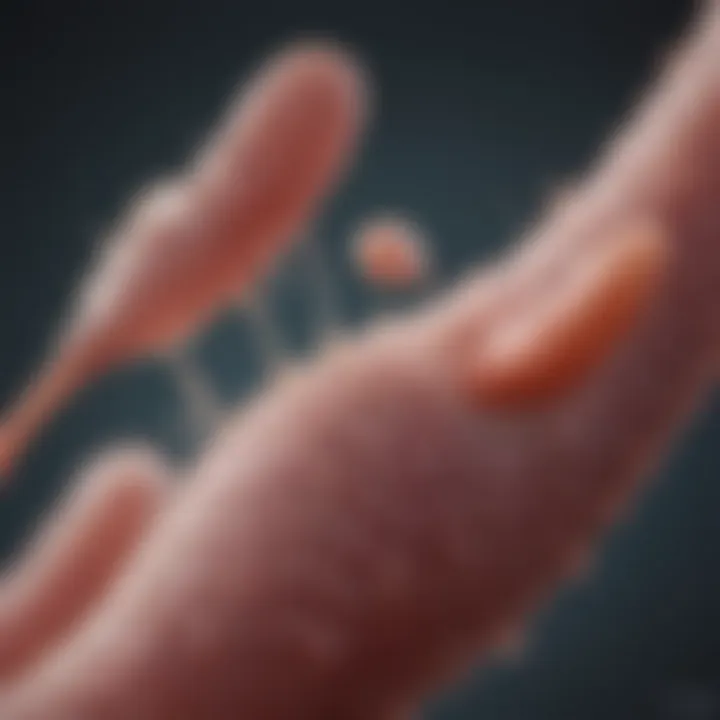
The male reproductive anatomy includes several key components:
- Testes: These are the primary reproductive organs. They produce sperm and testosterone. The testes are housed in the scrotum, which helps to regulate their temperature, a crucial factor for sperm viability.
- Epididymis: Located behind each testis, this structure is where sperm matures and is stored until ejaculation.
- Vas deferens: This muscular tube transports sperm from the epididymis to the ejaculatory duct.
- Seminal vesicles and prostate gland: These glands produce seminal fluid that nourishes and supports sperm.
The anatomy functions in harmony to facilitate the production and transportation of sperm. Each component needs to operate effectively for optimal fertility.
Spermatogenesis Process
Spermatogenesis is the process of sperm production that occurs in the testes. This intricate process involves several steps:
- Spermatogonial Phase: It begins with spermatogonia, which undergo several mitotic divisions.
- Meiotic Phase: Diploid cells transform into haploid sperm cells through meiosis.
- Spermiogenesis: Finally, these cells undergo transformations to mature into spermatozoa.
This process is highly sensitive to various factors, including temperature, hormonal balance, and blood flow. Any disruption, especially from conditions like varicocele, can significantly impair spermatogenesis. It ultimately affects sperm quality, count, and motility, which are key factors in male fertility.
Understanding the physiology of the male reproductive system is crucial for comprehending the implications of varicocele on fertility.
In summary, an appreciation of the structure and function of the male reproductive system lays the groundwork for examining the effects of varicocele. This understanding allows for a detailed exploration of how such a condition interferes with normal biological processes, ultimately impacting overall fertility.
Pathophysiology of Varicocele
Understanding the pathophysiology of varicocele is crucial for comprehending its impact on fertility. This section will explore how varicocele develops and its effects on testicular function. A deep dive into these elements provides insight into the underlying mechanisms that disrupt normal reproductive health.
How Varicocele Develops
Varicocele is characterized by the enlargement of the veins within the scrotum, similar to varicose veins seen in the legs. The development of varicocele typically occurs due to malfunctioning valves within the scrotal veins, leading to impaired blood flow.
- Venous Congestion: The primary cause of varicocele is venous congestion. In a healthy scrotum, blood flows efficiently. However, when valves fail, blood pools in the veins, enlarging them over time.
- Anatomical Predisposition: Most commonly, varicocele develops in the left scrotum. The anatomical layout makes the left renal vein longer and more prone to increased pressure, especially during activities that increase abdominal pressure, such as heavy lifting or prolonged sitting.
- Age Factors: Varicocele can develop during puberty, as the volume of blood flow increases with the growth of the testicles. The transitional phase of pubescence often exacerbates the condition.
Understanding how varicocele develops is the first step in untangling its implications for male fertility.
Impact on Testicular Function
The presence of varicocele significantly affects testicular function, which directly correlates to male fertility. The condition does not just exist as a physical anomaly but also influences various biological processes in the reproductive system.
- Sperm Production: Varicocele is associated with decreased sperm production. Studies show that men with varicocele tend to have lower sperm counts. The increased temperature due to impaired blood flow in the scrotum can hinder spermatogenesis.
- Sperm Quality: Many studies have indicated that the presence of varicocele can lead to sperm abnormalities. This includes issues such as poor motility and reduced morphology. Quality sperm is crucial for successful fertilization.
- Hormonal Influence: Varicocele can disrupt hormonal balance. The increased levels of testicular heat may alter the secretion of hormones required for the development of sperm. This alteration can affect testosterone levels, further complicating fertility issues.
It is established that varicocele not only affects sperm quantity but also quality, which impacts conception rates significantly.
A thorough understanding of these functional impacts allows for better diagnosis and treatment of fertility-related issues stemming from varicocele. Recognizing the pathophysiological underpinnings prepares practitioners and patients to take actionable steps toward addressing these concerns.
Influence of Varicocele on Fertility
The influence of varicocele on fertility is a critical topic in understanding male reproductive health. Varicocele is characterized by the enlargement of veins within the scrotum. It has been associated with diminished sperm production and quality, highlighting its potential impact on male fertility. The discussion on this subject is essential, as it provides insights into factors affecting couples trying to conceive. Understanding these effects can help in formulating effective management strategies and treatments.
Effects on Sperm Quality
Sperm quality is one of the primary concerns when discussing varicocele and its consequences on fertility. Studies indicate that men with varicocele often exhibit decreased sperm concentration, motility, and morphology. These parameters play a significant role in the ability to conceive.
Research suggests that the increased temperature within the scrotum, caused by varicocele, leads to damage in spermatogenesis. Elevated testicular temperature can affect the health of sperm cells, leading to abnormalities that are detrimental to conception. Furthermore, the oxidative stress caused by varicocele can lead to sperm DNA fragmentation, which may result in unsuccessful fertilization or risks in early pregnancy outcomes.
"The link between varicocele and compromised sperm quality is well established, making it a crucial factor in male infertility diagnostics."
Conception Rates in Affected Individuals
Conception rates in men with varicocele are notably lower compared to those without this condition. Studies report that men with varicocele have a reduced chance of achieving pregnancy through both natural conception and assisted reproductive technologies. This decline in fertility is primarily linked to the compromised sperm quality discussed previously.
Men with varicocele have been observed to experience longer time frames when trying to conceive. In cases where couples rely on assisted reproductive methods such as in vitro fertilization (IVF), varicocele continues to show a negative correlation with success rates. The presence of varicocele adversely affects sperm function even during the artificial fertilization processes, highlighting its significance as a hindrance in reproductive health.
Correlation with Other Male Factors
Varicocele does not act in isolation when it comes to male fertility. Often, its impact correlates with other male factors such as hormonal imbalances or the presence of other reproductive disorders. For example, men may simultaneously experience low testosterone levels, which can further exacerbate fertility issues.
Additionally, lifestyle factors such as obesity, smoking, and environmental toxins can interact with varicocele, complicating the overall reproductive health of males. These combinations of factors often create a compounded effect, making it difficult to isolate the individual impacts of varicocele.
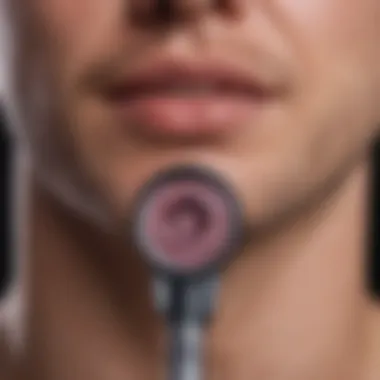

In summary, understanding the influence of varicocele on fertility encompasses a wide range of elements. Addressing issues around sperm quality is essential for couples trying to conceive. Moreover, recognizing the reduced conception rates and the interaction with other male health factors presents a more comprehensive view of fertility challenges faced by men with varicocele.
Diagnosis of Varicocele
Diagnosing varicocele is a critical component in addressing male fertility issues. Accurate identification allows for appropriate management, which can improve sperm quality and overall reproductive health. Comprehensive evaluation considers both clinical signs and advanced imaging techniques, thereby ensuring a reliable diagnosis. Understanding the diagnosis process is beneficial for medical professionals and patients alike, as it lays the groundwork for effective treatment strategies.
Clinical Evaluation Methods
A thorough clinical evaluation is essential for diagnosing varicocele. The assessment typically begins with a detailed patient history. This includes inquiries regarding any pain in the scrotum, changes in testicular size, or issues relating to fertility. Understanding these factors can help distinguish varicocele from other reproductive disorders.
The physical examination is equally important. During this examination, the physician may palpate the scrotum, particularly when the patient is standing. The presence of engorged veins, described often as resembling a "bag of worms," is suggestive of varicocele. Assessing the size and consistency of the testis is also vital, as atrophy might indicate chronic conditions mayoring male infertility.
- Key components of clinical evaluation:
- Medical history assessment
- Physical examination of the scrotum
This initial assessment helps establish whether further diagnostic imaging is necessary.
Imaging Techniques Used
In addition to clinical evaluation, imaging techniques play a prominent role in the definitive diagnosis of varicocele. Ultrasound is the primary method used in this evaluation. It is non-invasive and provides real-time images of the scrotum, allowing practitioners to visualize the dilated veins in the pampiniform plexus.
There are two main types of ultrasound used:
- Scrotal ultrasound: Offers clear visualization of scrotal anatomy and blood flow through Doppler imaging.
- Transabdominal ultrasound: Less commonly used, but can help in some cases, particularly in complex situations or when evaluating testicular torsion.
When necessary, more sophisticated imaging modalities can also be used:
- Magnetic Resonance Imaging (MRI): This may be indicated when differentiating varicocele from other pathologies or when surgical planning is needed.
- Computed Tomography (CT): Rarely used for this purpose, but can aid in detecting underlying issues that might complicate the scenario.
The effectiveness of imaging techniques ensures accurate diagnosis, thereby mitigating misunderstandings about the condition's severity.
Accurate diagnosis through clinical and imaging evaluations is crucial for the management of varicocele and its associated fertility challenges.
Treatment Options for Varicocele
Varicocele management plays a crucial role in addressing male infertility. The identification of suitable treatment options can significantly enhance fertility outcomes for affected individuals. Specifically, the decision-making process regarding treatment is influenced by the severity of the varicocele, the patient's symptoms, and their reproductive goals. This section will explore the available treatment options, focusing on both surgical and non-surgical approaches, as well as the associated benefits and considerations.
Surgical Interventions
Surgical intervention remains a primary treatment choice for varicocele. The typical methods include:
- Varicocelectomy: This is the surgical removal of the affected veins. The procedure can be performed through several techniques, including open surgery, laparoscopic surgery, or microsurgical techniques. Microsurgical varicocelectomy is found to have a lower recurrence rate and fewer complications.
- Advantages: Surgical interventions generally aim to reduce venous dilation and improve sperm parameters. Studies indicate significant improvements in sperm motility and morphology post-surgery, which can boost fertility chances.
- Considerations: While the benefits can be notable, surgical risks such as infection, hematoma formation, or damage to surrounding structures should be carefully considered. It is essential to weigh the potential benefits against these risks before proceeding.
Non-Surgical Treatments
Non-surgical options are also available for treating varicocele. These may include:
- Scrotal Support: Wearing a supportive garment can alleviate some discomfort associated with varicocele. This approach does not directly improve fertility but may enhance quality of life.
- Medications: While no specific medications have been proven to treat varicocele effectively, some treatments aim to manage associated symptoms. Anti-inflammatory analgesics or antioxidants may be suggested to improve overall testicular health.
- Advanced Therapies: Emerging non-surgical interventions include sclerotherapy, where a chemical agent is injected into the affected vein, leading to its closure. The effectiveness of this method can vary, and long-term outcomes require further study.
Management of Fertility in Affected Men
Managing fertility in men diagnosed with varicocele is a multifaceted process. The significance of this topic lies in its potential to enhance reproductive outcomes and facilitate the realization of parenthood for couples facing fertility challenges. It is vital to explore both assisted reproductive technologies and lifestyle modifications as methods to improve fertility outcomes.
Assisted Reproductive Technologies
Assisted reproductive technologies (ART) offer promising pathways for couples affected by male infertility due to varicocele. Various forms of ART can be utilized, including in vitro fertilization (IVF) and intracytoplasmic sperm injection (ICSI).
- In Vitro Fertilization (IVF): This involves combining an egg and sperm outside the body. This method can help bypass some issues related to sperm quality. The fertilized egg is then implanted in the woman’s uterus.
- Intracytoplasmic Sperm Injection (ICSI): This is a specific type of IVF where a single sperm is injected directly into an egg. This technique is particularly beneficial for men with severe sperm abnormalities, which may arise from varicocele.
The choice of technology often depends on the specific male factor at play, such as sperm motility and morphology. These techniques can improve conception rates significantly, despite the underlying issues caused by varicocele.
“ART not only assists in achieving pregnancy but also allows for genetic sampling, which can be crucial in addressing hereditary issues.”


Lifestyle Modifications to Improve Outcomes
Lifestyle modifications can also considerably enhance fertility management for men with varicocele. Changes to daily habits may lead to improvements in overall health and sperm quality.
Key lifestyle factors to consider include:
- Diet: A balanced diet enriched with antioxidants can support spermatogenesis. Foods rich in vitamins C and E, zinc, and omega-3 fatty acids should be emphasized.
- Exercise: Regular moderate physical activity can improve blood circulation and hormonal balance, which are important for reproductive health.
- Avoiding Heat Exposure: Men should minimize exposure to heat sources like hot baths, saunas, and tight-fitting clothing, as these can negatively impact testicular function.
- Reducing Alcohol and Tobacco Use: Abstaining from smoking and limiting alcohol consumption can improve sperm health and overall fertility.
Focusing on these lifestyle choices will not only enhance the management of fertility in affected men but also strengthen their overall well-being, paving the way for a healthier reproductive journey.
Emerging Research on Varicocele and Fertility
Research on varicocele and its effects on fertility has gained significant traction over recent years. This topic is essential in the context of male reproductive health, as a growing body of evidence highlights the physiological effects of varicocele on spermatogenesis and overall fertility outcomes. By understanding these nuances, healthcare professionals can develop more effective diagnostic and treatment strategies for affected individuals. Emerging research not only tracks changes in existing treatments but also uncovers the mechanisms through which varicocele impacts fertility.
Current Investigations and Findings
Recent studies focus on identifying the precise biological mechanisms behind varicocele-induced fertility issues. For example, researchers investigate how increased testicular temperature, stemming from impaired venous drainage, compromises sperm production and quality. Current investigations employ various advanced imaging techniques and biomarkers to facilitate deeper insights into varicocele's effects on the male reproductive system.
Additionally, meta-analyses of existing data provide valuable perspectives on the success rates of surgical and non-surgical interventions. A notable finding suggests that surgical management may lead to improved sperm parameters and increased chances of conception in couples struggling with male factor infertility.
"Research indicates a significant improvement in fertility outcomes following varicocele repair procedures, underscoring the need for timely diagnosis and intervention."
Some projects also assess the impacts of environmental factors. This includes how oxidative stress affects sperm quality in men with varicocele, indicating potential cross-disciplinary insights between urology and reproductive toxicology.
Future Directions for Research
Looking ahead, future research will likely delve into personalized medicine approaches for the management of varicocele-related infertility. By leveraging advancements in genomics and proteomics, researchers can identify candidate biomarkers that may predict response to treatment. Tailored treatment plans derived from such data could improve outcomes significantly for affected couples.
Moreover, ongoing investigations into combined therapies are promising. Studies could explore the synergistic effects of non-invasive treatments, lifestyle modifications, and surgical interventions in managing varicocele's impact on fertility. Understanding how these approaches interrelate may lead to more holistic treatment strategies.
The exploration of lifestyle factors remains another vital research avenue. Investigating the effects of diet, exercise, and behavioral modifications on fertility in men with varicocele holds potential for practical applications in clinical settings.
Overall, emerging research continues to illuminate the complex relationship between varicocele and fertility. This knowledge is critical in shaping effective interventions, ultimately improving reproductive health outcomes for countless men and couples.
The End
The conclusion serves as a vital synthesis point for the information presented within this article. It is where we reflect on the intricate dynamics between varicocele and various aspects of male fertility. The significance of understanding varicocele stretches beyond the confines of medical theories; it encompasses real-world implications for individuals dealing with infertility issues related to this condition.
It is crucial to emphasize key takeaways that have emerged throughout the discussion. Recognizing the prevalence of varicocele can prompt early diagnosis and intervention, which are imperative for improving reproductive outcomes. Furthermore, the physiological mechanisms that underline how varicocele impacts sperm quality necessitate attention from both researchers and clinicians. They must consider not only the biological factors but how these interrelate with lifestyle and environmental aspects.
Through effective management strategies, including surgical interventions and lifestyle modifications, affected individuals can better their chances of conception. The necessity of a personalized approach to treatment will continue to be paramount as our understanding of varicocele evolves through ongoing research.
In summary, both current findings and recent investigations highlight the importance of continuing the dialogue surrounding varicocele and fertility. This understanding has the potential to pave the way for innovative treatments and improved clinical practices moving forward.
Summary of Key Points
- Varicocele is a common condition that can significantly affect male fertility.
- Early diagnosis and intervention can positively influence reproductive outcomes.
- Understanding the physiological effects of varicocele on sperm quality is essential for targeted treatments.
- Management through surgical and non-surgical options, alongside lifestyle changes, can improve fertility prospects.
- Continuous research is vital to uncover new insights and therapies related to varicocele.
Implications for Clinical Practice
The implications for clinical practice are critical when addressing varicocele in the context of male fertility. Medical professionals must employ a multi-faceted strategy that combines clinical evaluations, imaging techniques, and tailored treatment options. This ensures that individuals diagnosed with varicocele receive a comprehensive care approach.
Adopting an evidence-based framework helps guide discussions with patients regarding the impact of varicocele on fertility. It is vital for healthcare providers to remain informed about the latest research findings and emerging therapies. This ongoing education can facilitate improved patient outcomes and satisfaction. Additionally, addressing lifestyle factors, such as diet and exercise, within clinical settings can contribute to enhanced sperm quality and overall reproductive health.
Cited References
Cited references in this article encompass a range of high-quality, peer-reviewed studies and clinical guidelines. The relevance of these references includes:
- Research Studies: Primary studies that explore varicocele, its prevalence, and its effects on fertility.
- Clinical Trials: Outcomes from various treatment options that inform on efficacy and safety.
- Review Articles: Comprehensive analyses summarizing current knowledge and emerging theories in the field.
Each reference is selected carefully to ensure that the findings presented are not only recent but also reflect the consensus in the field of male reproductive health. Some notable sources include journals such as Fertility and Sterility, The Journal of Urology, and comprehensive biomedical databases.
Further Reading
For those interested in extending their knowledge on varicocele and its impact on fertility, several resources provide valuable insights:
- Books on Male Reproductive Health: Titles such as "Male Reproductive Health" provide foundational knowledge.
- Online Medical Databases: Resources like PubMed and Google Scholar can help you explore a wide range of journal articles on varicocele research.
- Educational Websites: Platforms like MedlinePlus and Healthline offer well-sourced articles discussing various aspects of male reproductive health and conditions like varicocele.
- Communities and Forums: Engaging with online communities on platforms such as reddit.com, where individuals share personal experiences and knowledge can provide practical insights into living with varicocele.
By referring to these materials, readers will enhance their understanding, building upon what has been discussed in this article.



